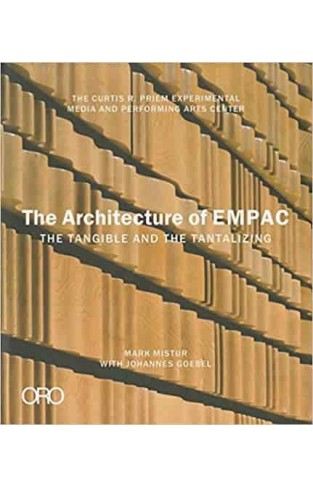The Architecture of EMPAC: The Tangible and the Tantalizing
The Architecture of EMPAC: The Tangible and the Tantalizing
By:
-
Rs 3,310.75
- Rs 3,895.00
- Ex Tax :Rs 3,310.75
- Price in loyalty points :3700
You saved Rs 584.25.
Due to constant currency fluctuation, prices are subject to change with or without notice.
EMPAC is a building like no other. The Curtis R. Priem Experimental Media and Performing Center (EMPAC) is an extraordinary instrument for artists and researchers alike. With its concert hall, a theater and experimental black box studios, EMPAC bridges the ever expanding potential of digital technology with the most refined details for acoustics, visual production and performing arts. EMPAC is designed, without compromise, for technology and the human experience, ranging from performances and new productions in time-based arts to the creation and navigation of large-scale immersive environments by researchers and engineers. On the campus of the oldest technological university in the U.S., the vision of EMPAC synthesizes a grand architectural gesture with the complex requirements of a true interdisciplinary enterprise for the 21st century.
Dr. Shirley Ann Jackson's foreword describes a vision for a 21st-century research university and EMPAC as one instrument to enhance the culture of a polytechnic institute and to provoke innovation. An essay from EMPAC director Johannes Goebel focuses on the human dimension and the senses and the frontier of time-based arts. Essays by Sir Nicholas Grimshaw, acoustician R. Lawrence Kirkegaard, theatre design consultant Joshua Dachs and Grimshaw Architects partner involved in the project from beginning to end William Horgan, each examine the question of performance-based design integration and tell the stories of innovations that resulted from their various important points of view. The building and the book do more than promise results. Being in operation for two years at the conclusion of writing the Architecture of EMPAC, the book concludes with appendix complete with the events it has been home to, the artists who have been in residence and the new productions to date, with the opening concert, excerpts from the opening festival, a building light installation, plus a time-lapsed movie of the construction included in a DVD.












